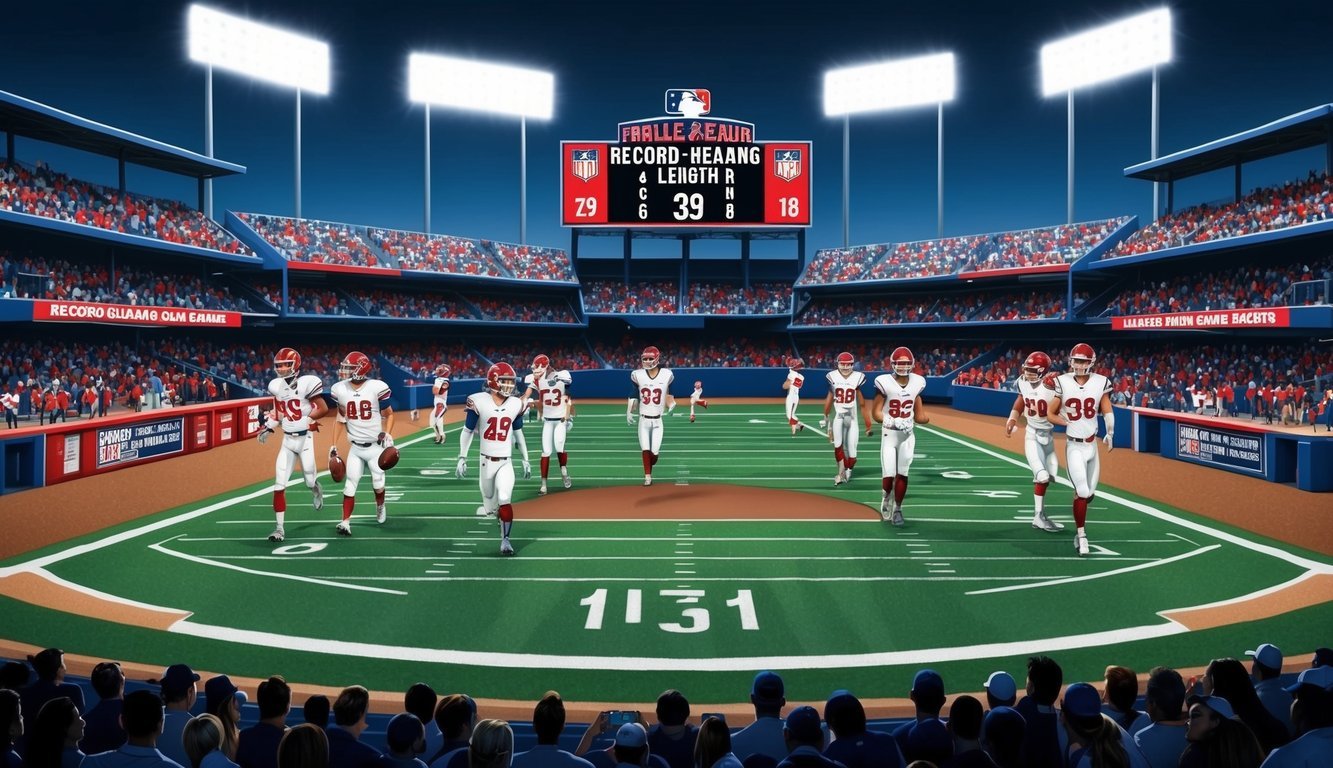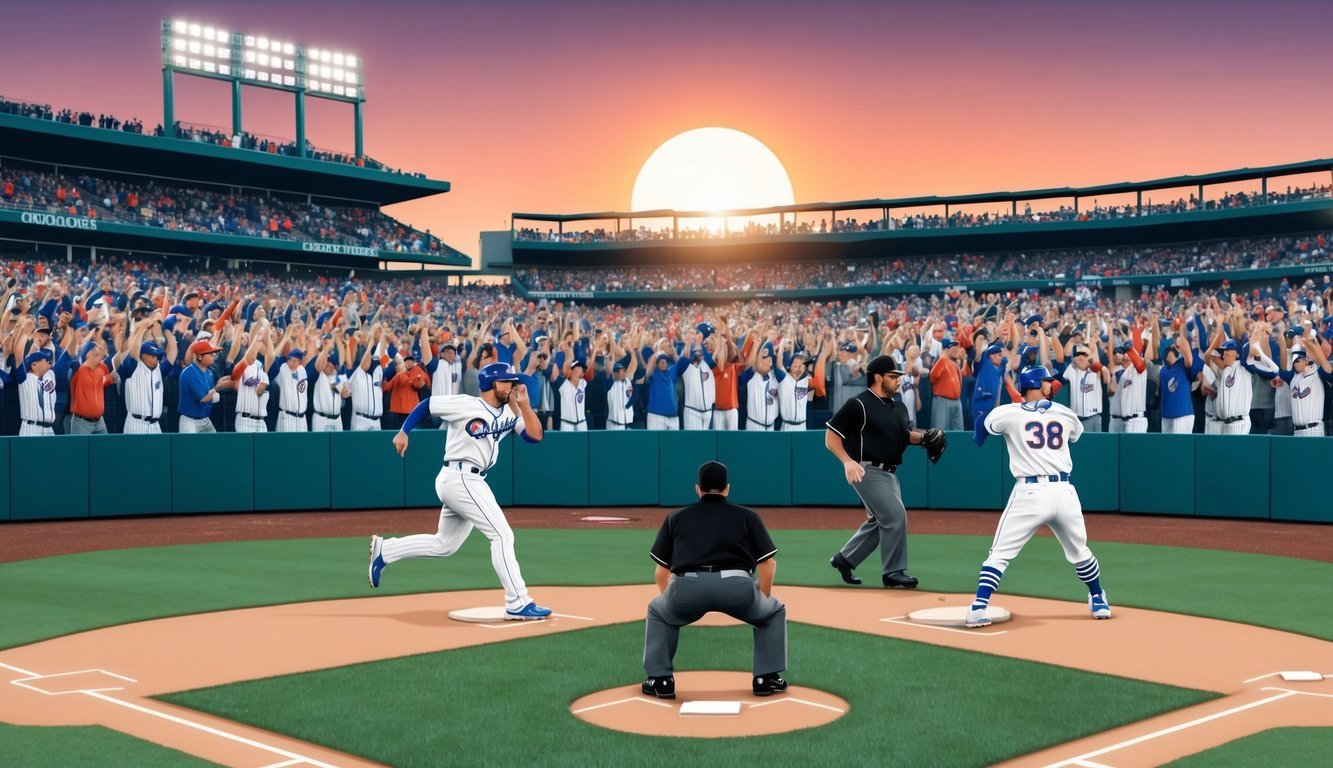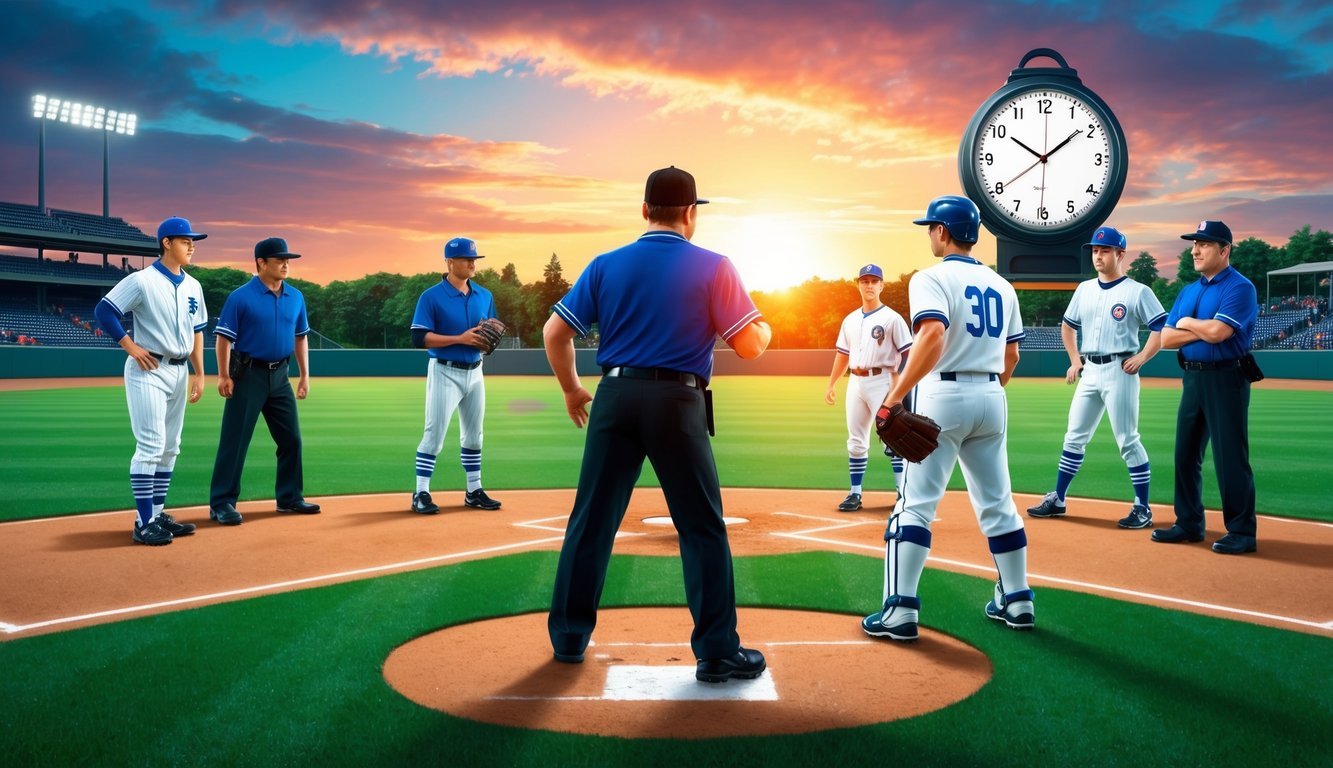Baseball fans love a good marathon game, but some contests have truly tested the limits of player and spectator endurance.
The longest MLB game ever played stretched an incredible 25 innings.
This epic battle between the Milwaukee Brewers and Chicago White Sox took place on May 8-9, 1984 and lasted 8 hours and 6 minutes before finally ending.
The game remained deadlocked at 3-3 from the 9th inning until the Brewers broke through with three runs in the top of the 25th. The White Sox couldn’t answer in the bottom half, giving Milwaukee a hard-fought 6-3 victory.
Both teams used eight pitchers, with relievers throwing the equivalent of multiple complete games.
While this contest holds the record for innings played, the longest MLB game by time actually occurred in 1984 between the White Sox and Brewers.
That game was suspended after 17 innings due to a league curfew and resumed the next day, totaling 8 hours and 6 minutes of playing time.
Historical Context and Records
Baseball has seen its share of marathon games throughout history.
These epic contests have pushed players to their limits and captivated fans for hours on end.
Notable Longest Games
The longest game in MLB history took place on May 1, 1920, between the Brooklyn Robins and Boston Braves.
This 26-inning affair ended in a 1-1 tie due to darkness.
Joe Oeschger of the Braves and Leon Cadore of the Robins both pitched complete games, a feat unimaginable in modern baseball.
In 1984, the Chicago White Sox and Milwaukee Brewers played a 25-inning game, the longest by time at 8 hours and 6 minutes.
More recently, in 2018, the Los Angeles Dodgers and Boston Red Sox battled for 18 innings in the World Series, setting a new postseason record.
Evolution of Game Length Rules
MLB has introduced various rules to manage game length over the years.
In 2016, intentional walks no longer required pitches to be thrown.
The 2020 season saw the introduction of a runner on second base to start extra innings, aiming to prevent excessively long games.
2021 brought seven-inning doubleheaders, though this rule was short-lived.
In 2022, MLB implemented a pitch clock for minor league games.
The 2023 season saw this rule reach the majors, significantly reducing average game times and potentially impacting future records for longest games.
Iconic Longest Games
Baseball history is filled with epic marathons that tested players’ endurance and fans’ dedication.
Two games stand out for their sheer length and the stories they created.
Rochester vs Pawtucket, 1981
On April 18, 1981, the Rochester Red Wings and Pawtucket Red Sox began what would become the longest professional baseball game ever played.
The Triple-A matchup stretched an incredible 33 innings over three days, lasting 8 hours and 25 minutes of playing time.
The game started on a chilly Saturday evening and continued past midnight into Easter Sunday.
After 32 innings, with the score tied 2-2, play was suspended at 4:07 am.
The teams resumed play on June 23, when the Red Sox finally clinched victory in the bottom of the 33rd inning.
Future Hall of Famer Wade Boggs played for Pawtucket, going 4-for-12 in the marathon.
Dave Koza emerged as the hero, driving in the winning run for a 3-2 Pawtucket victory.
Boston Braves vs Brooklyn Robins, 1920
May 1, 1920, saw the longest game in Major League history by innings.
The Boston Braves and Brooklyn Robins (later the Dodgers) battled for 26 innings before the game was called due to darkness.
Both teams scored in the 5th inning, but neither could break the 1-1 tie.
The pitchers dominated, with Boston’s Joe Oeschger and Brooklyn’s Leon Cadore each throwing complete games.
Yes, they pitched all 26 innings!
The game lasted 3 hours and 50 minutes, much shorter than modern extra-inning affairs.
Neither team used a relief pitcher, and the players’ endurance was truly remarkable.
This record for innings played still stands over a century later.
Memorable Performances

The longest MLB game featured remarkable displays of skill and endurance from both pitchers and hitters.
Players pushed their limits, creating unforgettable moments that have become part of baseball lore.
Pitching Feats
Joe Oeschger of the Boston Braves and Leon Cadore of the Brooklyn Robins (now Dodgers) delivered superhuman performances in the 26-inning marathon of 1920.
Both pitchers incredibly threw complete games, a feat unimaginable in modern baseball.
Oeschger and Cadore each allowed just one run over 26 innings.
The pitchers’ duel was a testament to their stamina and skill.
They combined for an astounding 115 batters faced.
Oeschger struck out 7 batters, while Cadore fanned 5.
Their pitching lines remain some of the most impressive in baseball history.
Hitting Milestones
Carlton Fisk’s game-winning home run for the Boston Red Sox in the 1975 World Series, while not from the longest game, stands as one of baseball’s most iconic hitting moments in an extended contest.
The 12th-inning blast gave the Sox a crucial victory.
Fisk’s dramatic shot not only secured the win but also solidified the matchup as one of the most thrilling in World Series history.
The excitement of the game echoed through Fenway Park, drawing fans to their feet as they celebrated the moment.
Incredibly, while that game showcased some of the most intense competition in baseball, it did not feature the most runs in an MLB game, a record that still holds a special place in the annals of sports history.
In the 1984 marathon between the White Sox and Brewers, Harold Baines finally ended the 25-inning affair with a home run.
Tom Seaver, typically a starting pitcher, earned the win in relief.
The game saw 195 at-bats, with several players racking up 10 or more plate appearances.
Fan Experience and Game Impact

Marathon baseball games test the endurance of even the most devoted fans.
The stands thin out as innings drag on, leaving only die-hard supporters to witness history in the making.
At the Stadium
Fans who stick around for extra-inning marathons face unique challenges.
Food and drink supplies often run low or sell out completely.
Restroom lines grow longer as the game stretches into the night.
At Fenway Park, home of the Boston Red Sox, spectators bundle up against the chilly New England air during lengthy night games.
Some fans create impromptu bed spaces in the stands using jackets and backpacks as pillows.
Others pass the time by starting new chants or inventing quirky games to stay entertained.
Lucky fans might snag foul balls or other souvenirs as rewards for their dedication.
Media and Coverage
Extended games pose difficulties for media outlets.
TV and radio broadcasters must fill air time creatively as innings pile up.
They often dive deep into team histories, player stats, and obscure baseball trivia.
Some stations may cut away from marathon games, frustrating viewers at home.
Newspapers face tight print deadlines, sometimes forcing them to run incomplete game stories.
Social media buzzes with play-by-play updates and fan reactions.
Baseball forums light up with discussions about strategy and player stamina.
Dedicated fans track pitch counts and relief pitcher availability, turning into amateur analysts as the game wears on.
Rules and Regulations Over Time

Major League Baseball has implemented various rules and regulations to manage game length over the years.
These changes aim to balance tradition with the demands of modern play and viewer engagement.
Adapting to Modern Play
In the early days of baseball, games often ended due to darkness.
Night games, introduced in 1935, changed this dynamic.
Curfews were established to prevent games from running too late.
The American League set an initial 1 a.m. curfew, while the National League opted for midnight.
MLB later introduced suspended game rules.
Games halted due to weather or curfew could be resumed later, preserving the score and game state.
This prevented marathon games from stretching across multiple days.
Significant Rule Changes
Recent years have seen more aggressive measures to speed up play.
In 2015, MLB introduced between-inning timers to limit breaks.
The 2023 season brought a major shift with the pitch clock.
Now, pitchers must throw within 15 seconds with bases empty and 20 seconds with runners on.
Other changes include limiting mound visits and implementing a three-batter minimum for pitchers.
These rules aim to reduce dead time and keep games moving.
The impact has been significant, with average game times dropping by about 30 minutes in 2023.
